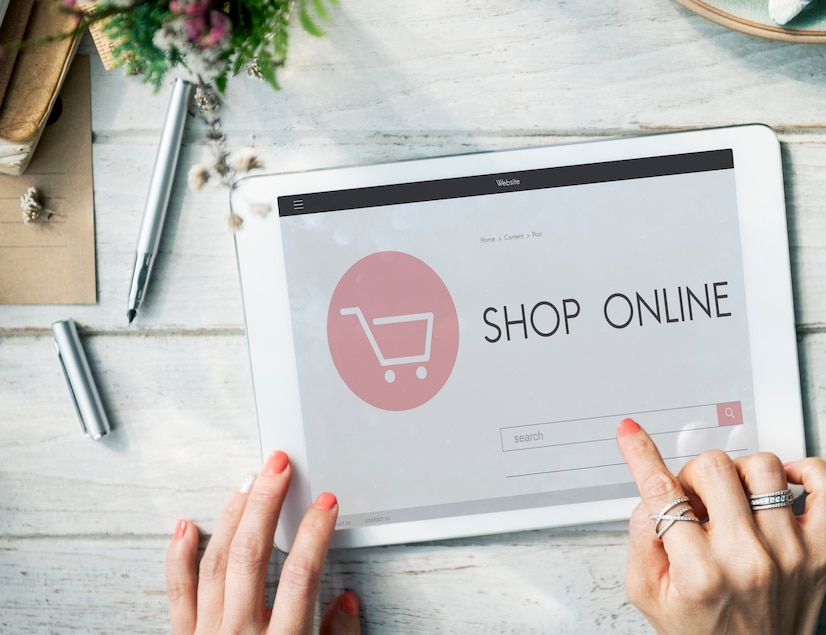Launching an e-commerce venture can be lucrative and satisfying, but it requires thoughtful design. Whether your goal is a side hustle-online store or a full-blown retail business, it helps to have a basic understanding of e-commerce business setup. If you want an e-commerce 101 while avoiding unnecessary fluff, this beginner e-commerce guide outlines the steps to start, run, and grow your online store.

Why Start an E-commerce Business?
The e-commerce industry has grown a lot in recent years. This growth comes from more internet use, mobile shopping, and a demand for convenience. Here are some reasons why starting an e-commerce business is a good idea:
- Low Startup Costs – E-commerce needs less money than physical stores.
- Flexible Business Model – You can sell physical or digital products, drop ship, or use print-on-demand.
- Global Reach – With the right plan, you can sell to customers worldwide.
- Scalability – Start small, then expand as demand increases.
- 24/7 Availability – Your e-commerce site can make sales anytime.
Quick Guide: 8 Steps to Start an E-Commerce Business
- Pick a Niche & Business Model – Find a profitable market and choose dropshipping, private label, POD, or subscriptions.
- Research Your Market – Validate your idea and understand your target customer.
- Source Your Products – Manufacture, wholesale, dropship, or create handmade goods.
- Choose a Platform – Set up on Shopify, WooCommerce, BigCommerce, or a marketplace.
- Build Your Online Store – Register your business, design your site, and optimise product listings.
- Market Your Business – Use SEO, email, social media, and paid ads to attract traffic.
- Manage Orders & Support – Provide seamless fulfillment, shipping, and customer service.
- Track & Scale – Monitor analytics, boost retention, and scale your product and marketing strategies.
Pro Tip
Start with a lean MVP (Minimum Viable Product). Don’t wait for perfection—test demand with a small product line and iterate based on real customer feedback.
Important Note
Consistency beats complexity. Many first-time store owners get stuck in over-planning. Focus on delivering value, simplifying your process, and showing up regularly with smart marketing.

Step 1: Choose Your Niche and Business Model
Before you start an online store, find a profitable niche and decide on a business model. Consider these factors:
Finding the Right Niche
- Research market trends and customer demand.
- Spot gaps where you can add unique value.
- Check out the competition and find ways to set your brand apart.
- Think about your interests and expertise.
Common E-commerce Business Models
- Dropshipping – Sell products without holding stock.
- Private Labeling – Create your own branded goods.
- Print on Demand – Sell custom products printed after an order.
- Subscription Boxes – Offer products on a subscription basis.
- Handmade & Custom Goods – Sell your unique items.
Step 2: Conduct Market Research
Knowing your target audience is vital for a successful e-commerce business. Research to:
- Identify your ideal customers (age, location, interests, shopping habits).
- Analyse competitors’ pricing and customer feedback.
- Determine demand and pricing for your products.
- Validate your business idea before investing in inventory or marketing.

Step 3: Select and Source Your Products
After choosing a niche, decide how you will source your products:
- Manufacturing – Work with a manufacturer to make goods.
- Wholesale Suppliers – Buy in bulk from wholesalers.
- Dropshipping Suppliers – Partner with suppliers for storage and shipping.
- Handmade – Create and sell your handcrafted products.
Step 4: Choose an E-commerce Platform
Selecting the right platform is key for a smooth e-commerce business setup. Here are some popular options:
- Shopify – Easy to use and offers built-in tools.
- WooCommerce – A flexible WordPress plugin for online stores.
- BigCommerce – Great for larger businesses with advanced features.
- Etsy – Perfect for handmade and vintage items.
- Amazon & eBay – Established marketplaces with built-in customers.
Step 5: Set Up Your Online Store
1. Register Your Business
- Choose a business name and register it.
- Get any needed licenses and permits.
- Apply for an Employer Identification Number (EIN) if necessary.
2. Build Your Website
- Pick a domain name that reflects your brand.
- Choose a clean, responsive theme for easy navigation.
- Optimize product pages with quality images and compelling descriptions.
- Ensure your site is mobile-friendly and loads quickly.
3. Set Up Payment & Shipping Options
- Use payment gateways like PayPal, Stripe, or Shopify Payments.
- Offer various shipping options with clear pricing.
- Provide free shipping incentives to draw in buyers.
Step 6: Develop a Marketing Strategy
A solid marketing strategy is crucial for driving traffic and sales. Here are key tactics:
1. Search Engine Optimization (SEO)
- Optimize product titles, descriptions, and meta tags.
- Use relevant keywords in your content.
- Improve your site’s speed and mobile usability.
2. Social Media Marketing
- Create profiles on Instagram, Facebook, and Pinterest.
- Post engaging content like product photos, testimonials, and updates.
- Use paid ads to reach targeted audiences.
3. Email Marketing
- Build an email list with lead magnets and pop-ups.
- Send welcome emails, promotions, and abandoned cart reminders.
- Use automated sequences to nurture leads and boost sales.
4. Influencer & Affiliate Marketing
- Work with influencers to promote your products.
- Start an affiliate program for commissions on referrals.
5. Paid Advertising (PPC)
- Use Google Ads and Facebook Ads to attract traffic.
- Try retargeting ads to engage visitors who didn’t buy.
Step 7: Manage Orders and Customer Service
To run a successful e-commerce business, focus on:
- Order Fulfillment – Ensure efficient order processing and shipping.
- Customer Support – Provide live chat, email, or phone support.
- Returns & Refunds – Have a clear return policy.
- Reputation Management – Encourage positive reviews and handle negative feedback professionally.
Step 8: Track Performance and Scale Your Business
To grow your e-commerce store, track key metrics and refine your strategies:
- Website Analytics – Use Google Analytics to track visitors.
- Conversion Rates – Analyze product performance and optimize your sales funnel.
- Customer Retention – Implement loyalty programs and incentives for repeat purchases.
- Expand Product Line – Add new products based on demand and trends.
- Scale Marketing Efforts – Increase ad spending on successful campaigns and explore new channels.
5 Frequently Asked Questions (FAQs)
1. How much does it cost to start an e-commerce business?
You can start lean with $500–$1,000 using dropshipping or print-on-demand models. Expect to spend more if holding inventory or investing in branding upfront.
2. What’s the best platform for beginners?
Shopify is a popular all-in-one platform ideal for beginners. WooCommerce is great if you’re comfortable with WordPress.
3. Can I run an e-commerce store without inventory?
Yes. Dropshipping and print-on-demand models allow you to sell without holding stock.
4. Do I need a business license to sell online?
It depends on your location and business model. Registering a business adds legitimacy and is often required for payment processors and suppliers.
5. How long before I start making money?
It varies. Some stores see sales in the first month, but consistent revenue usually builds over 3–6 months with solid marketing and testing.
So, when are you starting?
Launching an e-commerce business requires careful planning. But if done correctly, opening an online store can become a lucrative business. If you follow this beginner eCommerce guide, you will be able to optimize the setup of your ecommerce business in addition to laying the groundwork for success.
From starting a small boutique to scaling up a larger store, careful steps you take around niche selection, product sourcing, marketing and customer engagement will lead to sustainable growth.
The E-Commerce Business Plan: Ready to launch your e-commerce business? Start today by picking your niche, setting up your store, and implementing a marketing strategy!


